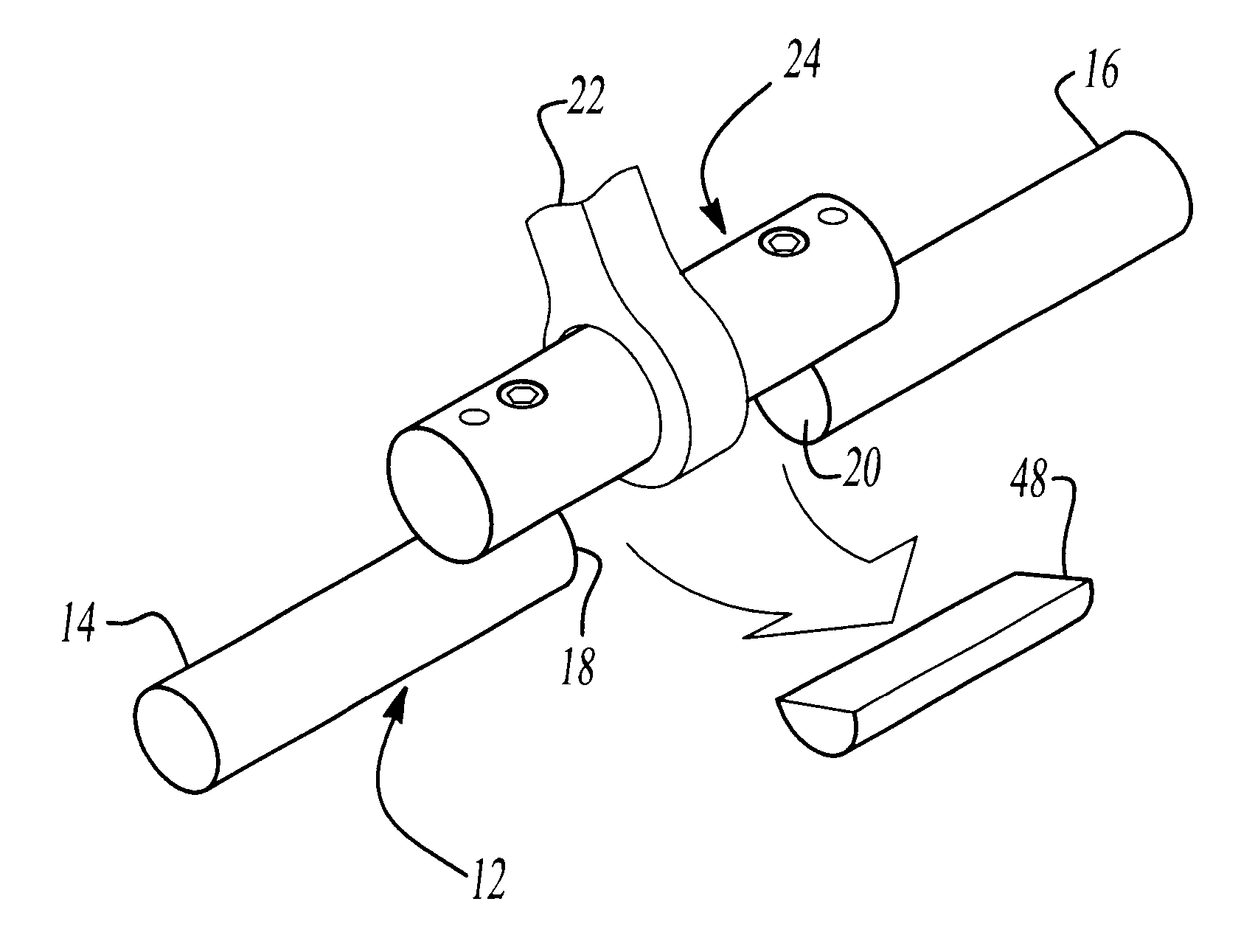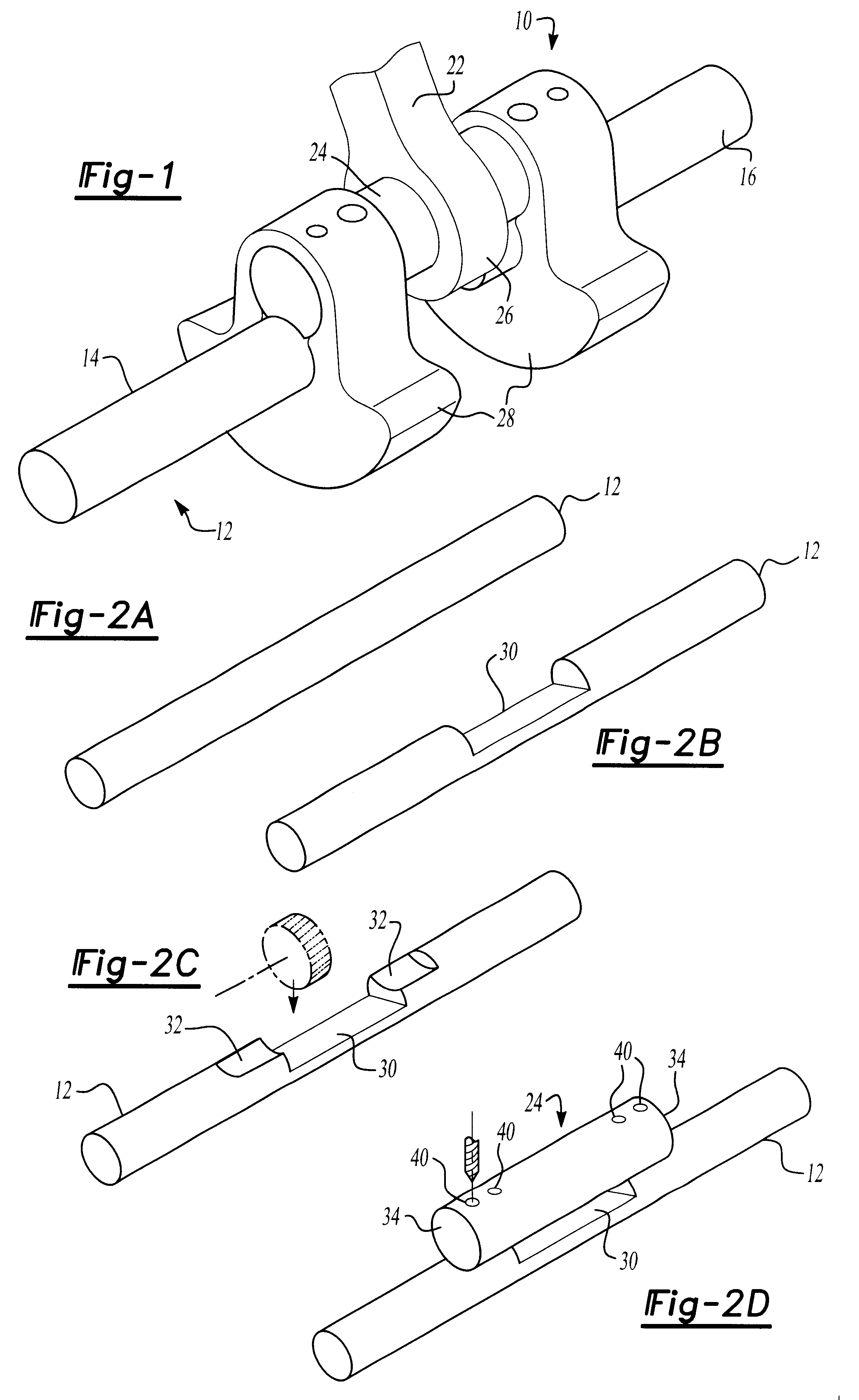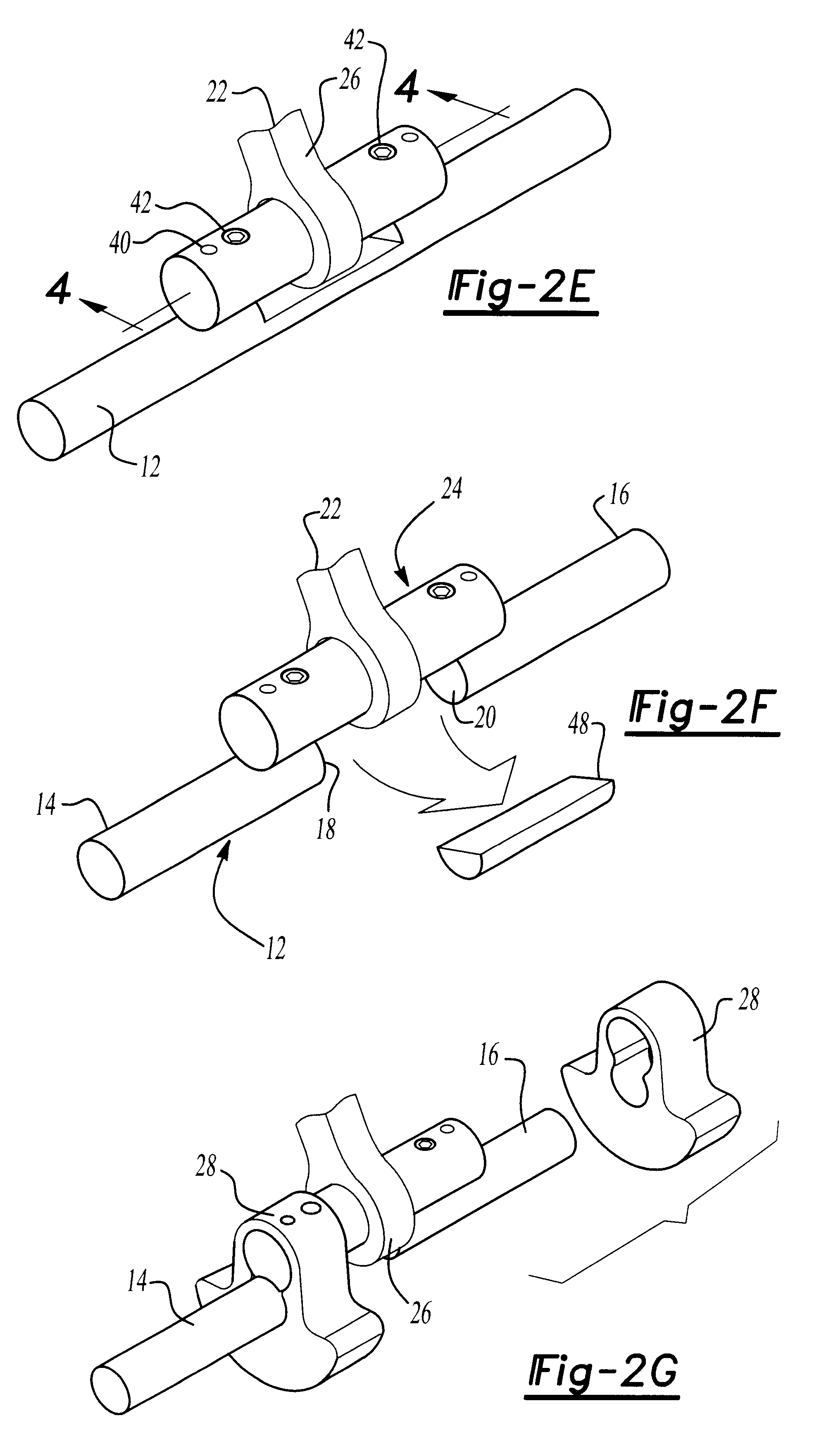Method for making a multi-piece crankshaft
a multi-piece, crankshaft technology, applied in the field of crankshafts, can solve the problems of increasing the overall material cost of the previously known one-piece crankshaft, disadvantages of one-piece crankshafts, and requiring specialized and expensive equipmen
- Summary
- Abstract
- Description
- Claims
- Application Information
AI Technical Summary
Benefits of technology
Problems solved by technology
Method used
Image
Examples
Embodiment Construction
With reference first to FIG. 1, a completed crankshaft 10 constructed by the method of the present invention is illustrated in FIG. 1. The crankshaft 10 includes a main shaft 12 having two or more axially aligned main shaft segments 14 and 16. Each main shaft segment 14 and 16, furthermore, has two facing ends 18 and 20 (FIG. 3). These facing ends 18 and 20 of the main shaft segments 14 and 16, respectively, are axially spaced apart from each other by a distance sufficient to allow a connecting rod 22 to pass between the ends 18 and 20 of the main shaft segments 16 and 14.
Still referring to FIG. 1, a crankpin 24 extends across the ends 18 and 20 of the main shaft segments 14 and 16, respectively, and is secured to the shaft segments 14 and 16 in a manner to be subsequently described in greater detail. The axis of the crankpin 24 is parallel to but radially spaced from the axis of the shaft segments 14 and 16. Furthermore, the piston connecting rod 22 includes a bearing 26 disposed a...
PUM
| Property | Measurement | Unit |
|---|---|---|
| strength | aaaaa | aaaaa |
| longitudinal length | aaaaa | aaaaa |
| length | aaaaa | aaaaa |
Abstract
Description
Claims
Application Information
 Login to View More
Login to View More - R&D
- Intellectual Property
- Life Sciences
- Materials
- Tech Scout
- Unparalleled Data Quality
- Higher Quality Content
- 60% Fewer Hallucinations
Browse by: Latest US Patents, China's latest patents, Technical Efficacy Thesaurus, Application Domain, Technology Topic, Popular Technical Reports.
© 2025 PatSnap. All rights reserved.Legal|Privacy policy|Modern Slavery Act Transparency Statement|Sitemap|About US| Contact US: help@patsnap.com



